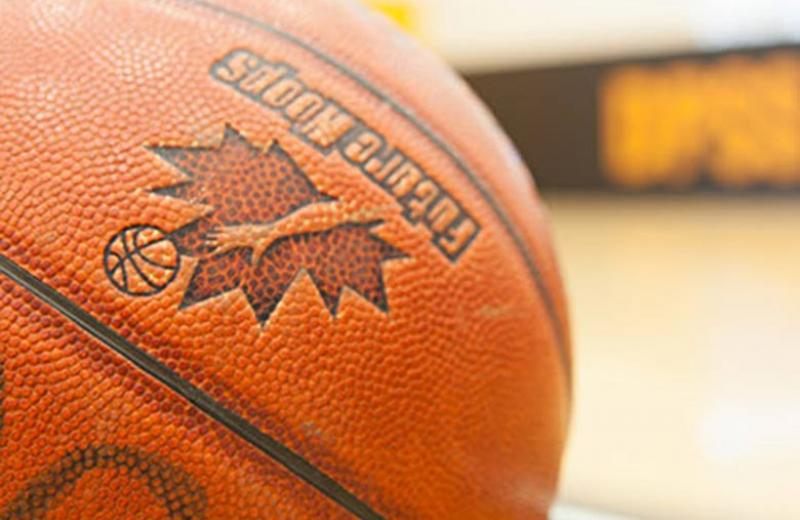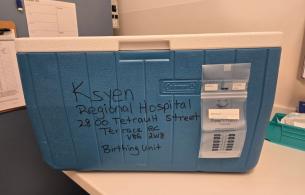This summer, we want to know what wellness means to you
Share a photo, story, drawing, or video explaining what wellness means to you for a chance to win a grand prize! To inspire you, we’ve featured regular wellness content on the Northern Health Matters blog all summer long!
Developing physical literacy skills are important
As a teen, Physical Education (PE) was my most dreaded class. I went to a very small school, whose focus was not on developing physical literacy skills, and so I missed out on the chance to really explore a variety of sports and activities. I was mediocre at best in the few team sports I did try, so by the time I made the transition into a larger high school with more opportunities, I didn’t have the skills to “make the team.”
At my new school, I had one semester left of mandatory PE class, and this is where my anxiety really bloomed. Not only did I lack the basic skills that most of my classmates had from receiving more vigorous PE training growing up, but I was painfully shy and failing to fit in with the “cool crowd,” while also struggling with the oh-so-common issue of body image. Intimidated and nauseous are two of the best words to describe me in this setting.
In time, I established a solid group of friends, but I couldn’t be done with PE soon enough. The irony of the fact that my current job is to promote increased physical activity is not lost on me! Then again, how many adolescent girls actually liked PE? My interest in physical activity came in later years, and for that I count myself lucky, because that’s clearly not always the case.
Why are physical activity levels decreasing in adolescent girls?
Generally, physical activity levels start dropping in teen years, and the drop is much greater for girls than for boys. A recent study showed that only 2% of Canadian girls between the ages of 12 and 17 are getting the recommended 60 minutes of daily physical activity! Why is that? There are many possible reasons for decreasing physical activity levels in adolescent girls (check yes to all that apply, or applied, to you):
- Lifestyle changes: Getting a drivers’ license, improving technology allowing instant communication, and the increasing need to “fit in” with friends can all add up to less activity.
- Lack of time: Physical activity is often the first thing to go as teens begin to feel increasing pressure to get good grades, while juggling multiple other commitments such as jobs in and outside of the home, family, and time with friends.
- Lack of access: Physical activity opportunities tend to decrease in high school. Transportation and cost (of equipment as well as to sign up) are also barriers.
- Feeling self-conscious and/or unskilled: In addition to regular old body image related self-consciousness, there’s also the anxiety that comes with not knowing how to play a sport well, or even at all. If you combine any of the above with a little “healthy competition,” this can be a recipe for disaster. A negative experience can make participants way less likely to be interested in “giving it another go.”
Make physical activity a positive experience
Children and youth who grow up being active are more likely to become active adults. So, how can we make physical activity and sport a more positive experience for youth, setting them up to develop healthy, active lifestyles that will follow them into adulthood? Here are a few ideas that are applicable to all young participants:
- Focus on fun! There is a time and place for competition - some people thrive on it - but if physical activity and sport are not made to be enjoyable when first introduced, repeat customers will be far less likely. Creating a low-pressure environment that focuses on building skills and having fun will help individuals feel more confident in a group setting.
- Variety! In order to find our niche, we need to be able to try a variety of activities to find what fits our interests and abilities best. Again, if we find something we enjoy, we are far more likely to stick with it. Also, introducing new activities allows individuals to learn the skills together, so no one person should be significantly better (or worse) than the rest.
- Focus on feeling good, not looking good or losing weight: Physical activity releases endorphins that make you feel fantastic, so as well as improving your overall health and getting stronger, it also boosts your mood and self-esteem.
- Encourage physical activity and healthy choices during leisure time, with family, friends, or individually: Opportunities for participation often disappear altogether after graduation from high school. Having some involvement that is not dependent on the school setting helps smooth the transition into an active adult life.
What motivates you to stay active in the midst of the whirlwind that is daily life? Do you have any ideas for how we can support our younger counterparts to have the confidence and desire to participate in more physical activity and sport?














Comments